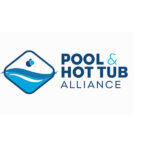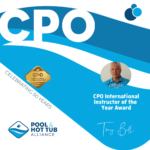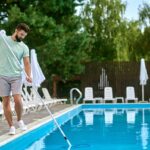Algae in swimming pools causes and prevention
Tip of the month…
The end of summer begins with a steady trend towards cooler weather. It’s a great time of year to enjoy a refreshing dip in the pool. However, in the middle and towards the end of September you’ll discover that it is also a key time of year to monitor pool hygiene and maintenance. Warm days and cooler nights are the perfect breeding ground for Algae. And it’s essential to pay close attention to water balance and chlorine sanitation levels. Just as you have already been doing in July and August.

Algae are a plant. And, they can hide in cracks and crevasses and lurk behind pool lights.
Algae needs food and finds it via phosphates and nitrates that travel on the wind. They don’t need to travel far, probably from the garden being tended next door.
When this food enters the pool, it’s playtime for Algae. And, in doing so, the spread very quickly; almost overnight and turn the pool green rapidly. The only barrier to this invasion is managing your water balance and sanitation to around 2-4ppm.
What to look out for
- Small areas of algae around the lights/corners etc
- Cloudy water
- Look on the shaded part of the pool wall first ( algae loves warm shaded areas )
- Feel the walls for slime
What to do
- Keep your chlorine levels between 2 – 4 ppm
- Keep your pool pump running ( at least 8 hrs per day constant )
- Check your water balance
- Run the ph. at the lower level of 7.2 – 7.4 ppm. This will help the chlorine to work better
- Brush the sides of the pool walls
- After brushing turn pump off for 30 mins to allow to settle then hoover to waste
- Use a mild preventative Algaecide (unless your pool has turned green then ask for advice)
Don’t be fooled by the lower ambient air temperatures.
You should not reduce pool pump times at all at this time of year. September brings weather that changes from hot to cool rapidly and pools can turn green within 24 hrs. Unfortunately, it can take up to days to clear a pool where algae have run amok.
- Remember to achieve at least 2 turnovers (8hrs running time) to clean around 84% of filtration
- Remember to keep the pump running constantly, not in 2 x 4 hr periods
- Do not use a high concentration algaecide unless supervised as other issues could arise








One Comment
One aspect that could complement your article is the environmental factors that contribute to algae growth. For instance, the presence of nearby vegetation, which can increase the amount of organic matter and nutrients in the pool, thereby accelerating algae growth. Understanding these environmental contributors can help pool owners take proactive measures, such as regular cleaning of surrounding areas and controlling runoff into the pool.